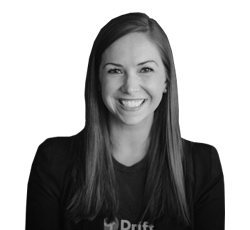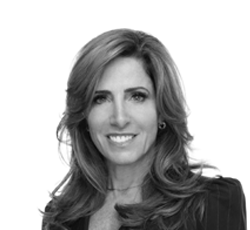Product + Success: The Winning Duo for Customer Success
Tatyana Mamut
|
Investor & Advisor
of
TMamut


Tatyana Mamut


Episode Summary
Today on the show we have Tatyana Mamut, a serial entrepreneur with an extensive background at Amazon, Salesforce, Nextdoor, and IDEO.
In this episode, Tatyana shares her insights into effective collaboration between product management and customer success teams.
Drawing from her diverse experiences, we explore how she fostered a unified vision at Amazon, enhanced CRM effectiveness at Salesforce, leveraged community feedback at Nextdoor, and applied design thinking principles from IDEO to align product and customer goals.
This comprehensive discussion provides a deeper understanding of the synergies necessary for customer-centric product development.
As usual, I'm excited to hear what you think of this episode, and if you have any feedback, I would love to hear from you. You can email me directly at Andrew@churn.fm.
Tatyana Mamut
Recommends
3 data points in Pendo to help you stay ahead of customer churnBuilding for BelieversMentioned Resources
Transcription
[00:00:00] Tatyana Mamut: Even Amazon doesn't work backwards from the customer because when I was working there we had all of these customers say I want a 1-800 number and Jeff Bezos said we're not putting a 1-800 number because it's not economical and I said okay. But what was the job to be done when they were asking for the 1-800 number?
[00:00:21] VO: How do you build a habit-forming product? Do you need to invest… We saw these different… You don't just gun for revenue in the door.
[00:00:27] Andrew Michael: This is Churn.FM, the podcast for subscription economy pros. Each week, we hear how the world's fastest growing companies are tackling churn and using retention to fuel their growth.
[00:00:40] Andrew Michael: How do you build a habit-forming product? We crossed over that magic threshold to negative churn. You need to invest in customer success. It always comes down to retention and engagement. Completely bootstrapped, profitable and growing–
[00:00:53] Andrew Michael: Strategies, tactics, and ideas brought together to help your business thrive in the subscription economy. I'm your host, Andrew Michael and here's today's episode.
[00:01:04] Andrew Michael: Hey, Tatyana, welcome to the show.
[00:01:07] Tatyana Mamut: Hello.
[00:01:08] Andrew Michael: It's great to have you. For the listeners, Tatyana is a serial entrepreneur having built successful products at Amazon, Salesforce, Nextdoor, and IDEO. She is currently an executive in residence at Reforge and a course creator. And prior to Reforge, Tatyana was the SVP of new products and general manager of Adopt at Pendo. Tatyana is also an investor and advisor to several startups. So my first question for you today is, how do you think your experience, your early experience at Leo Burnett has helped shape and impact your career progression?
[00:01:40] Tatyana Mamut: Wow, that's a great question. Yeah, my first job out of college was at Leo Burnett, which is a global ad agency for those who don't know. And it was a very exciting time in the world. It was the late 1990s. And there were a lot of brands that were being launched into new markets. And I had a front row seat into how to launch existing brands like Kellogg's and Procter & Gamble brands like Tide and Secret Deodorant and those types of things. into newer and emerging markets, for example, to Russia, to Latin American markets, into Korea. Really getting a global perspective was one big thing. The second big thing was, of course, it was the dot-com boom, the first one, in the late 1990s. I was the emerging technology specialist I think because I had worked in the campus computer center in college, and I was using email before any of the executives that I was working with.
[00:02:43] Tatyana Mamut: And so I got to really see all of the conversations on the front lines about how the internet was going to change things and especially how at the time Napster was really big and emerging and how new ways of interacting with content and with each other within society was going to be transformed through the internet. So I think it really gave me both a global foundation and a understanding of how technology transforms society, that foundation as well.
[00:03:20] Andrew Michael: It's very interesting. It caught my eye as well, the Leo Burnett, because it's completely different to all the other companies that you've been working at previously. Obviously, one like a world-renowned ad agency and then on the other side, like some really amazing great product companies. And it was just like there was a little bit of a disconnect. I was intrigued to sort of see, okay, like, what is the connection and interesting. Luckily for you, I guess that you were one of the first using email and enrolled in that in the college campus. Nice. So today we were just chatting before the show like what would be interesting to talk about today and I think obviously you have a wealth of experience from product perspective like just going through the background. I was like amazed reading the bio and just to speak to like many different great product organizations and working there.
[00:04:09] Andrew Michael: But also we said what might be interesting from a perspective is like being in the seats of a product manager, product owner or director product you have. Many different voices that come at you from all different directions constantly trying to fight for your mind share and trying to see how can we get certain things on the product roadmap. And one of those actually, the relationships is the relationship between customer success and product, which is often as we discuss on the show, not the greatest of relationships. And I'm keen to discuss with you today some of the ways that you've seen product and success work effectively together within organizations. So maybe just get started with what has been your experience?
[00:04:52] Tatyana Mamut: I advise a lot of companies. And of course, I've worked in a lot of companies. And there's very frequently, there's a situation where there's quite a bit of friction between the go-to-market teams, customer success, sales, marketing, and the product and engineering teams. And what that, I would say that what that comes down to oftentimes in, again, one of the things I hear so frequently, and you tell me if this resonates, is that customer success and sales don't feel that they're being heard by product.
[00:05:32] Andrew Michael: Yep. I hear that.
[00:05:34] Tatyana Mamut: Okay, so when I talk to customer success teams and customer success leaders, they say things like, we've been asking the product team to build these three features for two years, and they've never put it on the roadmap. Or sales will say, I had this deal, I needed this feature delivered, and I lost this deal because product wouldn't put it on the roadmap. Okay? Things like that. And then it becomes, you know, it sometimes also gets a little personal, like people feel personally ignored and devalued by the product managers and by the product team. And so I've come into organizations several times where this was the case, where there was a real dysfunctional, just interpersonal relationships between product and customer success, and needed to fix it. And what it takes to fix it is to really first have the go-to-market teams understand what product is doing.
[00:06:42] Tatyana Mamut: So it's not just sales coming to product with new feature requests. It's not just customer success coming to product with feature requests. It's the CEO. It's the board, sometimes board members, writing emails to the product team about their ideas and how they think the product should work. It is engineers also who have ideas and want to build things or want to build work on tech debt, which takes a lot of space on the roadmap as well. And what product managers need to do is deal with constraints and trade-offs. So they're always looking at, what are the trade-offs that I need to make in order to deliver the greatest value this quarter and next quarter and achieve the goals that we have for product, okay? And so, what this means, it's usually not that product doesn't care what customer success says. It's that the way that the communication goes is often dysfunctional.
[00:07:47] Tatyana Mamut: Because what often happens is that what product managers, the way that product managers think and determine what to put on their roadmap is how can I deliver the most impactful solution in the least amount of time that will deliver on a key job to be done for my customer. And that job to be done is usually linked to an increase in revenue or to an increase in retention. And so that is how they're thinking. They're thinking like, what are the new jobs to be done that I need to deliver on? And what are some new perspectives on getting real clarity about the jobs to be done that I've already identified, right, that really take me in a direction of putting something on the roadmap that I can deliver quickly, and that will help me make my quarterly goals. Okay.
[00:08:47] Tatyana Mamut: And the reason why the dysfunction happens is because on the other side, sometimes people are coming to product and saying, we've heard two customers say that they want this feature. Can you please put it on the roadmap? Right? And a good, sometimes a product manager I would say a product manager who is, you know, trained in talking to go-to-market teams will say, tell me more about what customers are actually trying to get done. What is our job to be done that they're not able to do in our product right now that makes them say they want this feature?
[00:09:30] Andrew Michael: Yeah.
[00:09:32] Tatyana Mamut: And that actually then leads to a very constructive conversation, right? Because there may be already something on the roadmap that will help to deliver on that job to be done. And the customer success person feels heard. And then they can go back to the customer and say, you know, we're, we're going to help where there's something on the roadmap is already there. And it's going to help you do what you want.
[00:09:56] Tatyana Mamut: Let me give you an example. I'm actually teaching a course, as you mentioned, at Reforge on product innovation. I talk about working backwards from the customer in this jobs-to-be-done framework. There's a person there who was an executive at Amazon and interfaced directly with Jeff Bezos. And he said, well, sometimes even Amazon doesn't work backwards from the customer because, when I was working there, we had all of these customers say, I want a 1-800 number. And Jeff Bezos said, we're not putting in a 1-800 number because it's not economical. And I said, okay. But what was the job to be done when they were asking for the 1-800 number? Because calling a 1-800 number is not any job that anybody really wants to do. There's not an actual job to be done, right? That's not an actual need or a use case that people really want fulfilled. So what are they trying to accomplish when they're asking for the 1-800 number? And he said, well, most of the time they want the 1-800 number because they weren't able, they wanted to know where's my order.
[00:11:04] Andrew Michael: Yeah.
[00:11:06] Tatyana Mamut: Aha. Well, that job to be done can be done in many ways, not just through a 1-800 number. It could be done through the interface, right? The ‘track my order’ feature on amazon.com actually serves that job to be done. And so when you can have that level of conversation, right, you as a customer success person, it's fine. You hear, hey, two customers have asked for this thing. The expectation should not be that the product managers put that feature on the roadmap. Either you provide enough context about why they're asking for that feature. So for example, many customers are calling us or emailing us upset that there's no 1-800 number. You know, and the reason why most of the time is because they can't track their order, their order hasn't arrived, and they want to know where it is. And then at that point, the product team can come back and say either, wow, that's interesting. That's something we don't have on the roadmap. Tell me more about this. And then they will size that and size the market opportunity for that and then put it on the roadmap or not.
[00:12:16] Tatyana Mamut: Or they will be able to come back to you and say, ah, the thing that the customers are upset about, which is not being able to track their order, we have a feature launching two months from now that will help customers track their order through the interface, not through the 1-800 number. And that's how you start to really have an effective relationship between customer success teams and product teams, is to talk about at the level of what does the customer want to accomplish and working together to identify those things, as opposed to customer success, you know, feeling like they should be telling the product team what to put on the roadmap in terms of concrete features. That generally does not lead to a very good relationship.
[00:13:06] Andrew Michael: Yeah, absolutely. And I think the prescribing features as well, as you say, it doesn't really go back to like the root problem, the root cause and really try to understand because customers don't necessarily always know what the best feature is going to be to solve that job to be done. And it's funny you should mention actually, like recently we had an episode with Daphne Lopes from HubSpot, where we specifically spoke about how customer success can use the jobs to be done framework within their roles and then how this creates a language for CS and for product teams to work more efficiently together because it definitely is a big barrier and I've heard those conversations before and been there where they said like, we heard from these two customers that this is the feature we need and then products not listening to us and we haven't been able to get this prioritized and as you mentioned even on the sale side I lost a customer because of X, Y, Z.
[00:13:58] Andrew Michael: It really, it pays to understand, I think, sort of like the product process and be able to empathize a little bit on their end, as you mentioned, all the different voices. But then also, like, really understand this jobs to be done framework and why it's important and why a lot of product teams have adopted it because it really centers around the end user and what are they trying to achieve. And essentially, as a CS, like, that's your goal is to try and help your customer achieve their job to be done. What are some of the ways then you're seeing the communication being handled more effectively and maybe pick like a team that you see that's really effective when it comes to working with CS and product and how they're communicating effectively.
[00:14:38] Tatyana Mamut: I'll tell you what I implemented at Pendo when I got there because there was also some of this going on. And so Pendo is a product analytics platform, one of the leading product analytics platforms in the world. And I was hired to build a new product for internal facing software experiences. And again, all of our go-to-market teams had a lot of ideas about what needed to be built. And, and so and the product team was also, we were doing, conducting our own research and trying to figure out what to build. And so what we didn't want to do is we didn't want to create this, we're doing our own process. You know, we're going to follow our process and, you know, input from sales and CS isn't part of the process. Like that's not how I work.
[00:15:33] Tatyana Mamut: So what we did was we, on our roadmap, so the first real thing that I would very much tell product managers to do and product leaders to put in place, one tool and one very, very important aspect of being able to have a good relationship with all the other teams in the organization is to have a transparent roadmap and have a transparent backlog. And what I mean by a transparent backlog and a transparent roadmap is it probably cannot be in Jira. And the reason it can probably not be in Jira is because that's not where go-to-market teams live, and they may not even have licenses to be able to look at content in Jira. So wherever you have your roadmap, make it very transparent and make sure that anyone at any time, if they're on the phone with a customer, can click into the product roadmap and know if there's a feature that's being worked on that is similar to the one that you're hearing about, what date that is probably going to be delivered, or if it's deprioritized and on the backlog, and if you need to talk to product, about potentially bringing that up into the prioritized list.
[00:17:03] Tatyana Mamut: So one, transparent backlog. If you do not have a transparent backlog or transparent roadmap, transparent roadmap with a transparent backlog, ask your product team how you can get that transparency. And it cannot be in quarterly meetings where they tell you what the plan for the next quarter is, because that always changes. Within the quarter, things always change. And there's always a up-to-date roadmap that the product managers and engineers are looking at. And everyone in the organization needs to have access to it. So that's number one. Number two is, I like to use a Google Sheet for my backlog and my roadmap. And I know a lot of people are going to yell at me because it's not the best in class tool for a roadmap. And again, I prioritize transparency and everybody being able to use a tool over the best tool for roadmapping. That is my personal prioritization. And so what I do is I have, you know, and if it's a complicated product, I did the same thing at Nextdoor, and we had a lot of product teams and we had a very complicated product. And we just had different tabs for those different areas of the product.
[00:18:24] Tatyana Mamut: So local business had a tab, the main feed had a tab, you know, the advertising team had a tab, right? I mean, Google Sheets is very, it's very easy to scale into more complex products in Google Sheets. But again, it maintains the transparency. And then there's a tab that is, you know, product requests, there's always a product requests tab. And there should be a product request area. Sometimes, actually, the product requests, Pendo has a great product request feature in the feedback area of the product, which is also extremely useful. So this one doesn't necessarily have to be in the same place as the roadmap. But the product requests is a place that anyone in the company can write, I have a feature request, or I have a request for a change in the product. Here is the name of the person who's requesting it inside the company, and here is the reason why.
[00:19:25] Tatyana Mamut: And the reason why isn't because two customers have requested it or because I'm hearing from customers that they want this. The reason why is I was on a call with a customer. They had this problem. They weren't able to do this in the product. There was no workaround that I could walk them through. You know, so like something like that, right? So really describe what the customer wanted to do, was unable to do. Or if there was a convoluted workaround, describe the convoluted workaround. So be very, very concrete about what's happening. And then the other thing that I really like is sending the product team recorded calls, right? If you are a customer success team, and you record your conversations with customers, you know, a great thing to do is, you know, the reason why for the request, put a link to the call.
[00:20:23] Andrew Michael: Yeah.
[00:20:24] Tatyana Mamut: And when you put a link to the call, then the product manager is able to actually hear the pain of the customer themselves, which is so much more powerful than getting an abstract request that's handed down from somebody else.
[00:20:40] Andrew Michael: And it's such a small detail though as well. I think just hearing it from the customer selves even though as a CS or sales, you might write exactly as the customer mentioned, like hearing that from another party being able to empathize directly with the customer I think. There's nothing more powerful to motivate a team to sort of say, okay, like we really need to help this customer and solve it. I love that one.
[00:21:04] Tatyana Mamut: And it's not just this customer, right? It's in the follow-up, right? It should be, this is an example of a very common customer pain point that I hear. Listen to this recording and let's follow up so I can give you more data points. And that's the way to talk to product managers as well, is in terms of data points, not in terms of, I have this idea or I have a feature request. Right? Like your product manager, let me give you some data that you may not have right now. And product managers love data. And it doesn't have to be numerical data, right? It can be the data of talking to customers.
[00:21:44] Andrew Michael: And I think ideally as well trying to quantify the size of the problem. So if it is like you say, it's not just five customers but these five customers maybe represent X amount in revenue for the business and it's a churn risk or XYZ, like the more details you can provide in terms of what the impact is going to be for the business and the size and scale because, like I think most people have probably been in a company where the CEO comes and he hears one piece of feedback from one customer and it's like all of a sudden we need to change product strategy and things need to ship and move. But really like when you get down to it, you need to understand, okay, yes, listening to feedback is important, but we need to be able to quantify it and understand, okay, you know, didn't just hear from these two people, but actually, here's the recording so I can empathize and then here's how big the problem actually is. It's not just this lone voice, but there's a lot more of them. I love that.
[00:22:37] Tatyana Mamut: The alternative is, here's a lone voice, but this is the new ideal customer profile that we want to get more of. So as we expand our market and we try to get more customers like this, if we don't solve this proactively, we're going to be getting more unhappy customers because more of our future customers are going to look like this customer.
[00:23:00] Andrew Michael: Very interesting.
[00:23:02] Tatyana That also works. Because product managers, this is the other difference between customer success and product management. Product managers are not just thinking about building the product for our current customers and to keep current customers happy. Product managers are thinking about how to get future customers and sell to customers that we don't yet have. And so that also is one of the pieces of tension.
[00:23:33] Andrew Michael: Yeah. It's very interesting you bring this up as well because I literally like last week had an interview with the chief customer officer at Planhat, Chris. And one of the discussions that came up was like who should be responsible for defining the ideal customer profile. And he sort of said our customer success is in the best position to do this and he gave the reasons why he felt it and stuff and was like one of the first times, I was like yeah, I don't think I can entirely agree with that because the ideal customer profile, the customers that we have today are direct results of the product we built and the marketing we've done up to now but they don't necessarily represent the best opportunity for the business and it's up to that product marketing to be able to explore these new where is the market going what's trending, what should the product look like and then how can we meet these customers.
[00:24:20] Andrew Michael: So it's an interesting notion. I think it's one of the things maybe that does cause that friction as you said like in customer success. You're hearing all the problems today. You're speaking to the customers on the ground. You feel like you know them best but that doesn't always necessarily represent the best opportunity for the business. So how do you advise like product teams, maybe to communicate this better within the wider team so people can understand where the product is moving and where the ball is going.
[00:24:50] Tatyana Mamut: Well, again, I think a transparent roadmap is number one, a transparent roadmap that anyone could open at any point in time and comment on and understand what is the estimated delivery date for a feature. Okay, that is super, super important. And I see so many product leaders very hesitant to do this. And I don't understand, I honestly don't understand why they hesitate to make a very transparent roadmap where everybody in the organization can see the current prioritization and what are the estimated delivery dates. But that is really on the onus of product in many ways. And the other onus of product is to be very responsive to all of the, not necessarily feature requests, but all of the big challenges that are brought up by customer success. If you're hearing something from customer success, if you're hearing the same feature requests quarter over quarter over quarter, or you go into, if you have an internal tool where people can vote on features to be delivered, and there's something at the top that the product team has deprioritized for whatever reason, the product team must go and do deeper, have a deeper conversation about what are they building that addresses that job to be done or that customer need that is not that particular feature.
[00:26:25] Tatyana Mamut: Because there's almost always a reason why the team believes that they're going to be delivering on that need without delivering the feature. And that needs to be communicated. So that is a big thing. I think also defining having very clear documentation about what are all the product decisions and customer decisions that are being made and who made them is important. So another tool that I advise companies to put in place is what I call the spider document. And I have all these tools and templates free and publicly available for people. And a spider document is a decision-making document that really says, when there are big product decisions, this is the situation. Here are the people making the decision. Here's the input that we've gotten. Here are the people that we've gotten input from the decision. Here are all the ideas that we considered to address the situation. That's filled out before you make the decision. And then the DER are, what is the decision that we made? Who made that decision? The explanation of why we chose that idea over the others that we outlined, and then what is the rollout plan.
[00:27:45] Tatyana Mamut: And having this documented and again transparent and available for the whole organization really helps people understand how decisions are being made and why certain things are being prioritized and other ideas are being deprioritized. And that is very important for a healthy culture and to have people feel that they're being heard. And on the ideal customer profile, remember, it's called ideal customer profile, not just customer profile. So I agree, in many ways, customer success has a very good idea on the current customer profile, because they deal and talk to those customers every day. However, the ideal customer profile may look very different than the customers that Customer Success is interacting with.
[00:28:40] Tatyana Mamut: The reason why it may look different is for two reasons. One, because the job of a company and the job of product managers is to continue to grow and find new customers to grow with. Those are future customers that Customer Success never even talks to. The second reason why is because Customer Success is usually interacting with day-to-day with a very biased sample of customers, because who are the customers who call? And I would urge everyone in customer success to really reflect on what percentage of the overall customer base are you actually interacting with on a day-to-day basis? Like, you might come into contact with them in the QBRs and things like that, but so do product people, right? And so do other, you know, other groups. And so I do think, like, just for Customer Success folks to remember that you are interacting with a very biased sample of customers. And the job of product is to sample across all of the customers. The ones who never call are very important for product research.
[00:29:54] Andrew Michael: It's an interesting point. I think we've talked a lot on the show previously about MPS and the problems and challenges that have because of the biased sample that you're receiving. I think, as you mentioned, the same point applies here. Those that care enough or have enough time to spend talking to CS to go through how to take advantage of the product, it brings a lot of bias with it and a lot of feedback that you're going to hear. And a lot of times, maybe it's the people that aren't using the product enough and should be, and figuring out how to serve those customers better is a more efficient use of time for products. Nice, so first thing, transparent backlog, open sourcing that, pulling it out of something like Jira, making it accessible in Google Sheets.
[00:30:38] Andrew Michael: Next up, giving a way for people to be able to submit to products, allowing them to be able to give the reasons why, make sure they quantify it and give data. Next up, open sourcing, how decisions are made. You mentioned the spider document, we'll make sure to leave that in the notes for the listeners. And then being able to sort of really understand how those decisions are made from there. What's next? What else would you advise teams and how they can work better together?
[00:31:06] Tatyana Mamut: The other thing is just a mindset shift. Most of us in our day-to-day jobs focus on our specific functional goals. We have meetings in our own functional teams. We interact with our functional colleagues. We generally don't interact, especially in this remote work environment. We don't frequently bump into folks from other functions. This is one of the downsides of remote work, and people should be aware of this. You may be more efficient at your own function and your own little siloed set of goals. But the mindset shift is the actual value that everybody does needs to be seen in the context of the whole company.
[00:31:53] Tatyana Mamut: So your job, everybody's job at a company is to raise the stock price. Whatever your performance review says, if there's a mindset shift, and this has to come bottom down and through the middle management as well. If there's a mindset shift that our job is to raise the stock price of the company and other functions are doing something that we really believe is going to potentially raise the stock price of the company, we should put our own little egos aside. If, if they're doing with, if somebody has ignored us or felt like we feel brushed off by them. Right. And now they have shipped something and delivered something that we believe may raise the stock price of the company. Put all of that aside. I know it's hard to do, but that is ultimately where all of us, we're all better off by not optimizing for our own functions and our own personal performance goals, we are all better off if the stock price increases.
[00:33:06] Tatyana Mamut: And the other thing that I really try to help people understand is if you are getting equity from your company, whether it's a public company or a startup, it actually doesn't matter as much if you get fired because, you know, maybe you're not achieving your specific goal. Like, ultimately your wealth will come from the value of the stock that you've accumulated in this company. That's going to be potentially worth much, much more than staying in this particular job for a couple of months, right? And so having everybody just take that perspective that we are building something that is here to raise the value of the company. I think that if you can put that into place as a cultural mindset, it goes a long way to solving all of these little interpersonal conflicts and frictions and interactions.
[00:34:03] Andrew Michael: Yeah. It goes down as well for all the teams. If we win, we all win together and that's sort of the mindset that needs to happen. I do find though sometimes in organizations, product tends to be put up on a pedestal and the product team. And I find in these organizations this is where like sort of you see the biggest tension lie where like product is the most important thing and everything goes towards product and energy and everything that's talked about as always revolves around product. How do you see organizations dealing with this where it's sort of like this cultural mindset of product is God and everything else is there to support and serve product?
[00:34:46] Tatyana Mamut: Well, I think that one of the things that organizations really need to answer is, what is the product? Sometimes, especially if you have a technology-focused CEO, they think that the product is just the features and the functions. If you have a CEO like Jeff Bezos, he will say, no, the product is helping you find the best product for the lowest cost and having the best experience doing it. That's the actual product that we're building. And there's a technology piece to it. And there's a customer service piece to it. There's a delivery piece to it. And all of that is the product. So I would actually say that if you are very clear about what is the product, like what are the pieces that are required to actually deliver the full job to be done and the full value to the customer, then what you often have is a virtuous cycle where, you know, the customer interactions that customer success is having is seen as part of the product.
[00:36:01] Andrew Michael: I love that and I think it's so important. I think as well, like it's why these companies like Apple and Amazon are so successful because it's this, their product is the end to end experience. It's not just like the shiny phone that comes out of the box at the end of the day, but it's really about how every touch point you interact with a company like Apple or with like Amazon feels consistent. You know what to expect. It's always a great service at the end of the day, whether it's 24 hour, 48 delivery to your doorstep or just having things working seamlessly together and being able to copy-paste a password on your iPhone and paste it onto your Macbook. Like for me, it still blows my mind how is like extremely meaningful, like small, uh, things and the details and attention to detail these companies have when it comes to the overall experience. Tatyana, I think we could continue talking for hours, so I have one question that I ask every guest. What's one thing that you know today about churn retention that you wish you knew when you got started with your career?
[00:37:04] Tatyana Mamut: So one thing that I thought early in my career is that happy customers don't churn and unhappy customers do churn. Where customers that use the product a lot don't churn and customers that don't use the product a lot do. I have found in my experience empirically that that is not true. And that the customers who are taking their time to call you and tell you how unhappy you are, are often very unlikely to turn. And the customers who never call you to tell you how unhappy they are or anything, you don't even know if they're unhappy or not. Right? They're using the product was sort of in an average way. They don't call you. They don't complain. Why? Because it's not even worth their time.
[00:37:57] Tatyana Mamut: A customer's time in terms of their level of commitment. So what you need to think about is not those two things, happy, unhappy, or is there NPS score? The people who give you low NPS scores are taking their time to give you a low NPS score, which means that they have a higher level of commitment to your product and to your company than somebody who never responds to the survey. So the people who are taking their time, it's the level of commitment. So I actually think about, as opposed to other product people, usage and NPS scores, I think are a lot less interesting than having a model where you can track the level of commitment of a customer.
[00:38:48] Tatyana Mamut: So commitment curves. I think far too many companies use NPS and CSAT and usage metrics and not enough track customer levels of commitment. I think tracking how to bring customers into higher and higher levels up the commitment curve is a much more effective thing to do, which I only realized once I was leading the local business with my general manager. She was creating this local business product for Nextdoor. And she and I really looked at what was happening with local businesses and which ones were churning versus not on other products as well. And we actually found is that the ones who complained often the most And sometimes at the lowest NPS scores were least likely to turn in some cases.
[00:39:45] Andrew Michael: Yeah.
[00:39:46] Tatyana Mamut: Because they were really spending their time to try to improve this platform that they were deeply committed to. So think about commitment curves as opposed to NPSC stat and usage rates.
[00:40:02] Andrew Michael: What are some other methods of commitment that you can measure? So obviously one is like how much they care about giving feedback and complaining about the product or service, but what other things can be measured when it comes to commitment?
[00:40:15] Tatyana Mamut: This is very specific to an industry. It's very specific to a business and it's very specific to a product. So this is really, I think, a case by case basis of figuring out what are the levels of commitment in your different customer segments. How do you identify that in your particular product, because it's not as easy as, you know, usage or feature adoption, or NPS or anything like that. It's, it's actually probably much more nuanced. Maybe there will be a more generalized version of how to track this. But right now I find that it's usually case by case, business by business, product by product, you have to figure it out.
[00:41:00] Andrew Michael: Nice. Well, Tatyana, it's been an absolute pleasure chatting today. I've really enjoyed learning how products and CS can work better together and form better relationships to be able to deliver value to customers and ultimately raise the share price, which is what everybody is there to do as a team. Is there any final thoughts you want to leave the listeners with today? Anything that they should be aware of on your end or how can they keep up to speed with your work?
[00:41:27] Tatyana Mamut: Yeah, I would really love if everybody followed me on LinkedIn. I post a lot. I post a lot of my tools. I post a lot of the things that I'm doing. I post really interesting things that I find in the world. I'm very deep in the generative AI conversations and discussions right now. So, you know, if you're interested in generative AI and how all of those things are evolving, you'll see a lot of that from me. So that's really the best way to keep up with me because I'm doing so many things all the time. And it's all posted on LinkedIn.
[00:42:02] Andrew Michael: Amazing. Well, we'll make sure to leave that in the show notes along with anything else that was discussed today. And thank you so much again for joining. I wish you best of luck going forward.
[00:42:12] Tatyana Mamut: Thank you.
[00:42:19] Andrew Michael: And that's a wrap for the show today with me, Andrew Michael. I really hope you enjoyed it and you're able to pull out something valuable for your business. To keep up to date with Churn.FM and be notified about new episodes, blog posts and more, subscribe to our mailing list by visiting Churn.FM. Also, don't forget to subscribe to our show on iTunes, Google Play, or wherever you listen to your podcasts. If you have any feedback, good or bad, I would love to hear from you and you can provide your blunt, direct feedback by sending it to Andrew@Churn.FM. Lastly, but most importantly, if you enjoyed this episode, please share it and leave a review as it really helps get the word out and grow the community. Thanks again for listening. See you again next week.
Comments


Tatyana Mamut

A new episode every week
We’ll send you one episode every Wednesday from a subscription economy pro with insights to help you grow.
About
The show

My name is Andrew Michael and I started CHURN.FM, as I was tired of hearing stories about some magical silver bullet that solved churn for company X.
In this podcast, you will hear from founders and subscription economy pros working in product, marketing, customer success, support, and operations roles across different stages of company growth, who are taking a systematic approach to increase retention and engagement within their organizations.
































































.png)






































.png)
































































































